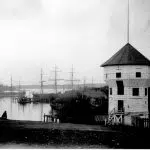
NHL’s digitally enhanced dasherboards are here to stay, enhancements are coming
The NHL’s digitally enhanced dasherboards are here to stay. And additions are coming to a system that currently showcases advertisements.
The league launched the new look on NHL game broadcasts this season. Traditional in-venue ads remain on the boards but there is now digital replacement signage for viewers watching on screens.
“What we are seeing now is the beginning of a system that will look very different over time,” NHL chief business officer Keith Wachtel said Wednesday.
The league partnered with London-based Supponor to develop the AI-based technology to program the graphics. Ads and brands that are seen exclusively on the boards right now will eventually have company in the form of “production enhancements.”


